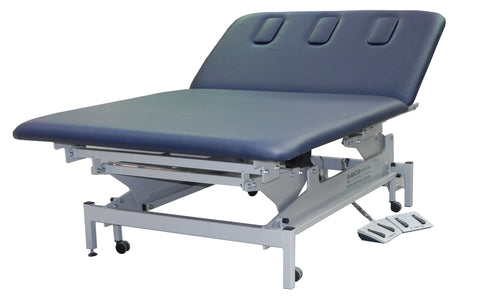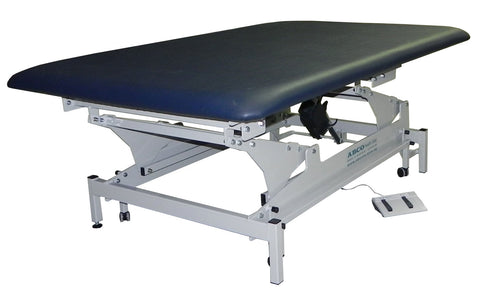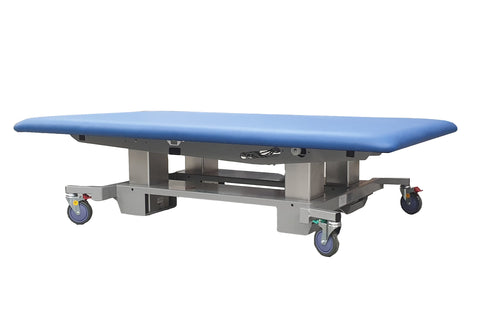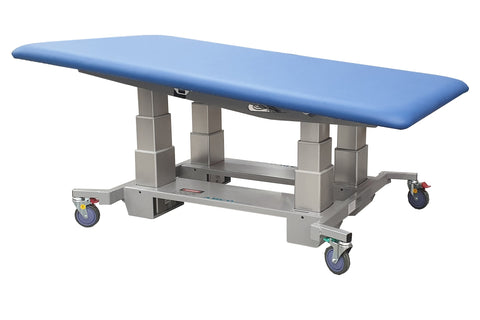Neurological Tables
Frequently Asked Questions
What is a neurological table used for?
A neurological table, also called a neurology table, is an examination table used for the treatment of patients who suffer from conditions associated with the nervous system. These tables are specifically designed to provide a stable and adjustable surface that facilitates neurological assessments and rehabilitation exercises such as Bobath therapy.
What is the Bobath treatment?
The Bobath treatment, also known as the Bobath Concept or neurodevelopmental treatment (NDT), is a specialised type of physiotherapy treatment aimed to assess and treat patients with neurological impairments, with the goal to improve movement and control. It does this by addressing underlying motor control and sensory processing issues, focussing on facilitating normal movement patterns and promoting the integration of sensory information to enhance functional abilities. The ultimate goal is to maximise the patient's potential for independent movement and functional participation in daily activities.
How much weight can a bariatric neurological table hold?
Bariatric refers to the management and treatment of obesity. Therefore a bariatric table is one specifically designed and constructed to accommodate individuals with higher body weight or of larger size. Bariatric tables are typically designed with more heavy duty materials, and additional support mechanisms like reinforced legs and adjustable features to accommodate patients who may have limited mobility.
ABCO Health Care offers two variations of our bariatric table, the ABCO Bariatric 1 Section Bobath Neurological Table and the ABCO Bariatric 2 Section Bobath Neurological Table. Both tables come with a lifting capacity of 500KG.
How is a neurological table different from a regular treatment table?
ABCO Health Care neurological tables are specifically designed to cater for neurological therapies and treatments. This could include for example a Stroke patient undergoing the Bobath technique. While a regular examination table could be suitable for use in this field, a neurological table has some key differences:
- Flexible Adjustability: ABCO Health Care neurological tables come in options for 1 section, 2 section or 3 section. The electrically operated sections allow for backrest inclination, leg rest and height adjustment. Tables can also come with breathing holes with plugs, allowing for easier positioning of the patient.
Table height adjustability is also important for patients with limited mobility, to allow the patient easy access on to and off the table. The ABCO 3 Section Bobath Neurological Table comes with a height range of 450mm-950mm allowing for easy patient access as well as a comfortable working height for the practitioner - Increased Stability: With a wider base and lifting geometry, the ABCO Health Care neurological tables have increased stability which is essential for patients suffering from neurological issues.
- Hoist Access: Patients with mobility limitations or physical disabilities may require additional support to access the table. The hoist allows for safe and controlled lifting and lowering of the patient to and from the table, which minimises the risk of fall or injury as well as strain on the caregiver. All of the ABCO Health Care neurological tables come with a clearance of 155mm below the base frame which allows for patient hoist access.
- Wider Table Width: One noticeable feature of the neurological table is the wider surface area. The wider table assists in a number of ways; to accommodate larger body sizes, to help enhance stability and balance for the patient and reduce the risk of tipping or moving during treatment, facilitate proper positioning during therapeutic exercises, helps with accessibility and use of positioning equipment.
What is the difference between a treatment table with sections vs a table with no sections?
ABCO Health Care designs tables with 1 section, 2 sections and 3 sections. All 3 types of tables serve the same ultimate purpose, with a few differences.
The one section tables, being a flat surface without any separating sections, can be a more cost effective option when only needed for more basic treatment and examinations as opposed to complex.
Two section and three section tables are designed to provide comfortable ergonomic support for patients. Two section tables have an adjustable backrest section, allowing patients to be positioned flat or sit upright at different angles.
Three section tables offer even more flexibility with independently controllable sections for the head, seat/backrest, and foot. The 3 section tables are a versatile option for medical practices that need adaptable treatment tables, accommodating patients with different needs and allowing specialised examination positions.
Tables with multiple sections can be especially useful for treatments and examinations relating to neurological issues as they allow for more flexibility with positioning the patient on the table as needed. This can be essential for certain treatments or for patients with certain conditions.








![The essential Guide to picking your Pilates Reformer [2025]](http://abcohc.com.au/cdn/shop/articles/abco-pilates-guide.webp?v=1742176339&width=480)

